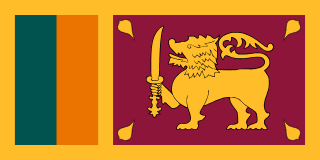Discover all the essential maritime information about Sri Lanka, a strategic island located in the Indian Ocean. This guide covers key aspects related to navigation, ports, climate, and maritime safety, crucial for any professional in the sector. Sri Lanka, with its unique geographical position and modern port infrastructure, plays a central role in regional maritime trade. Learn more about its main maritime zones, the regulations in force, and the environmental challenges faced by this island nation.

Explore the strategic ports and maritime infrastructure of sri_lanka

Essential maritime information about Colombo Port port for sea professionals

Essential maritime information about Galle Port port for sea professionals

Essential maritime information about Matara Port port for sea professionals

Essential maritime information about Negombo Port port for sea professionals

Essential maritime information about Jaffna Port port for sea professionals

Essential maritime information about Kankesanturai Port port for sea professionals
Explore the strategic ports and maritime infrastructure of sri lanka
Sri Lanka occupies a strategic position in the Indian Ocean, making it a critical hub for maritime transport between Asia, Africa, and Australia. The country’s ports play a vital role in regional and international maritime logistics. Among them, the Port of Colombo is the most important, ranked among the largest and most efficient in the region. It serves as a hub for major commercial exchanges, with modern infrastructure enabling the rapid handling of containers, bulk cargo, and various goods. Other ports like Hambantota, recently developed, represent strategic alternatives offering increased capacities for transshipment and management of growing commercial flows. Connectivity between these ports is supported by a network of adapted roads and railways, facilitating the internal distribution of goods and reinforcing the country's competitiveness in the maritime sector.
Sri Lankan port development is also supported by foreign investments and international partnerships aiming to modernize infrastructure and integrate new technologies for port efficiency and safety. The country also emphasizes environmental sustainability in managing its maritime activities, with measures aimed at reducing the ecological impact of port operations and protecting local marine biodiversity. The government and port authorities work closely together to ensure strict enforcement of international standards regarding maritime safety, pollution prevention, and risk management related to navigation.
Moreover, the presence of a significant fleet flying the Sri Lankan flag asserts the country's position in the global maritime sector. Ongoing training for maritime personnel and appropriate regulations ensure effective management in compliance with international standards, thereby strengthening the trust of commercial partners and international shipowners.
The maritime climate of Sri Lanka is characterized by seasonal monsoons that significantly influence navigation conditions. Two main monsoons affect the region: the southwest monsoon, active from May to September, and the northeast monsoon, from December to March. These periods are often associated with strong winds, heavy rains, and rough seas, requiring heightened vigilance from maritime operators. Despite these climatic challenges, Sri Lanka has robust and adapted infrastructure to ensure the safety of vessels, notably through coastal monitoring stations and well-organized maritime traffic services.
Maritime regulations in Sri Lanka align with international conventions such as those of the International Maritime Organization (IMO). The country applies strict standards for safety at sea, marine pollution prevention, and waste management from vessels. Sri Lankan authorities also implement regular control and inspection measures of ships in their territorial waters to ensure compliance with international standards.
In terms of safety, Sri Lanka is vigilant against risks of piracy and other maritime threats, although such incidents are relatively rare in the region. National naval forces collaborate with international partners to ensure effective surveillance and establish rapid response protocols in case of incidents. Furthermore, the country promotes the development of local capacities for managing maritime emergency situations, including combating oil spills and responding to accidents.
Finally, Sri Lanka works to promote sustainable exploitation of its marine resources to preserve its coastal ecosystem while developing the maritime sector as a key economic lever. This integrated approach involves coordination among various public and private actors around issues related to the environment, safety, and maritime competitiveness.